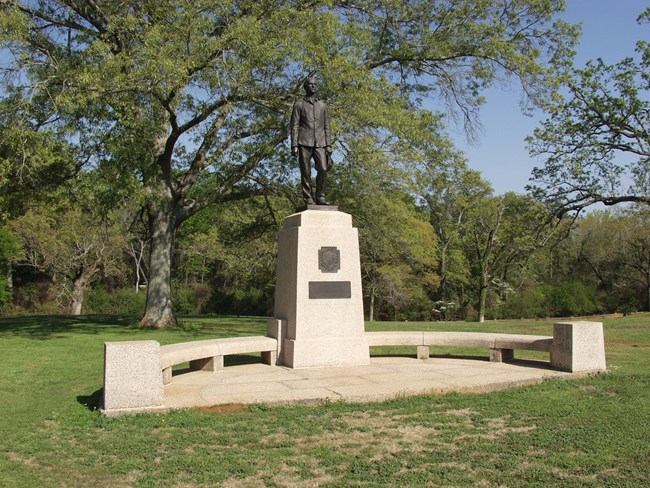
NPS/Photo It was not in the heat and excitement of battle that these me gave up life. No cheer of victory roused them as their souls took flight, but in the loneliness of multitude, with a comrade only by their side, within the enemy's lines and under a hostile flag, these sons of our beloved state passed to their great reward.
—Robert Kellogg of Connecticut George Q. Whitney and the five other former prisoners had been part of the three hundred members of the Sixteenth Connecticut held prisoner in Andersonville. Forty-five years later, they stood looking out across what had been the very land where they were confined. Earlier, the men had visited the spot where they had slept before entering the place called Andersonville Prison. While looking out over the field, Whitney and the men noticed Old Glory flying high above the land instead of the bars and stars that seemed to taunt them so long ago. Each took a long look at the flag, wiped the tears from their eyes and scattered out across the field to revisit the memories of long ago. These men were proud to have served their country and their state as members of the Sixteenth Connecticut Infantry, and now they were proud to be honoring all the Connecticut men who had remained loyal to the cause in the face of degradation. In January 1905, the state legislature passed a bill appropriating $6,000 for a monument at Andersonville, later it would add more money to the appropriation for the dedication ceremony. The state governor quickly appointed five members of the Sixteenth Connecticut to the commission. This regiment had more members held captive than any other regiment from the state. Frank W. Cheney, George Q. Whitney, George E. Denison, Norman L. Hope, and Theron Upson all received appointments and all had been held captive in the prison. The five men, eager to remember those who died there, sent out requests for designs from the major monument and granite companies as well as artists. In July 1906, the commissioners selected a simple be powerful design by sculptor Bela Lyon Pratt. From the Book: A History of Andersonville Prison Monuments. By Stacy W. Reaves. |
Last updated: May 8, 2019
